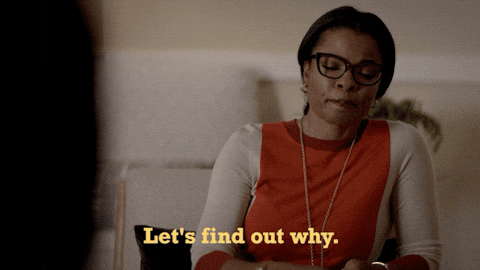Ter-wit Ter-woo! Twitter recently published its Birdseye report on industry insights and emerging 2022 trends.
The report reveals all of the trending conversation topics of 2021, so brands can use audience insights to increase their presence, take part in the conversation and build positive brand awareness on the platform. So, what do you need to know?
We’re seeing a massive shift in how we communicate and the topics we talk openly about on social media. Long gone are the days of memes; we’re using social platforms to open up to one another, discussing authentic topics like wellbeing, equality, green initiatives and much more.
There’s real power in generating conversations around these topics on Twitter in 2022. It’s time to delve into it all and see how you can use these insights to inform your marketing strategy and take flight (bird pun) for the new year.
Let’s talk about our feelings.
Jonathan Cohen, Content and Communications Director at ListenFirst, a social media analytics agency that researched into one of the Twitter reports, states that “focus on audience affinities, sentiment data, demographic information, and real-time trends” are key in 2022.
Brands need to dig deep into their audience’s interests and discover what they’re engaging with on social media.

Everyone’s chatting about movies.
As movies take centre stage yet again with big releases, we’re seeing an increase in Twitter search for all things film and entertainment. There’s been a +301% YoY growth in followers on social media for film brands between 2020 and 2021.
If you’re looking to jump on this trend, you only have to mention film brands to boost your engagement. In fact, you can increase your YoY engagement by +28.4% by doing so.
When we start to analyse tweets about film and entertainment, we’re finding positive reactions. For example, ‘only in theatres’ tweets were trending in 2021, with a decrease in the level of fear between quarter 1 of 2021 and quarter 3 of the same year.
Our attitudes, behaviours and perceptions are clearly shifting as we (hopefully) move out of the pandemic.
We’re getting tech-crazy!
The metaverse is gaining momentum. There was an increase of +19,245% YoY growth of Twitter conversations around the metaverse (given it was a late 2021 phenomenon, this would make sense) and ‘virtual real estate in particular…
Inevitably, advertising space will soon get sucked into the virtual vortex. But with more and more mention of the metaverse comes more concern over digital ethics, with a reported increase of conversation around digital ethics of +32% YoY.
So how can you maximise your virtual advertising while maintaining integrity? What can you, as a brand, do to ensure you’re fulfilling your social responsibility?
The report suggests that ‘direct contact with brands and institutions through social channels helps digital citizens leverage their influence and demand a commitment to societal good’. That means getting your brand ambassadors, customer service team, and wider team on social media – communicating directly with your consumer.
You’ve also got to be transparent. In 2021, we saw brands take a stand for their brand values. Take LUSH and Apple, for example. Apple launched its iOS14 update centred around privacy, and LUSH boycotted social media as a nod to disconnecting from the distracting powers of social media.
Stands like this help brands showcase their values and help to align them with an audience that’s also passionate about the same initiatives. But remember, ensure that whatever you preach is aligned with your brand values and what your customers stand for – you can read more into this topic in our blog here.

We all want a little escape
The report attests that social media users’ behaviour toward ads and brands on social media are changing. People want a sensory experience, something to transport them to their childhood or that creates escapism reflecting visions of their future. Make your ads as engaging as they can possibly be. Make them immersive. Make them fun.
But, as we’ve mentioned with the previous example of Apple and LUSH, you also need to be socially conscious in your ads. As we shift from physical to virtual, it poses challenges to society – and we need to reinforce the importance of a ‘wellness-first transition’ to overcome the health and wellbeing implications of this shift.
Luckily, social media is evolving alongside these changes in user attitudes. With enhanced and ever-evolving targeting options, brands can ramp up their ads with interest-based targeting. Presenting your audience with ads that they want to see and that will interest them is a sure-fire way to boost your conversion rate. And if you’re able to tie in these interests with your brand values, that’s all the sweeter.

But how do people want to experience brands?
With the metaverse making its way into our lives, we’ve seen a greater demand for experiential relationships between brand and audience. We’ve already noticed this shift shape up through social media updates, such as the increased presence of augmented reality in social media advertising so users can experience the product and ‘try before they buy’. The future looks very meta right now.
Most social media platforms have jumped on the immersive advertising interrail, meaning there’s a way to create that interactive experience across your platforms.
Why not try out Snapchat’s AR, the TikTok lenses or Facebook and Instagram’s Instant Experiences feature? These are all designed to immerse your audience in your ads, whether it’s through full-screen takeovers or visual effects that users can add to their own content, boosting collaboration between brand and user.
Advertising creative has become more emotionally driven, impactful, and in line with the customer. By that, we mean brands are tuning into their audience more, understanding what makes them tick and what resonates with them positively and negatively.
Companies then work to tie those messages into their brand – which is what marketing has always been about, right? And using innovative digital technologies like virtual reality to tell stories and captivate in their ads only helps to strengthen the message.
In a nutshell…
In 2021, six key topics stood out:
- Wellbeing
- Creator culture
- Everyday wonder
- One planet
- Technology and life
- My identity
While some of these trending topics won’t come as much of a surprise, we wanted to quickly dive into the ‘everyday wonder’ topic that surged in 2021. Last year saw a +33% growth in conversation around this, particularly focusing on a ‘need for meaning at a time of uncertainty’.
Likely brought on by the pandemic and emergence of the metaverse, we’re seeing a demand for imaginative escapism. Throughout the pandemic, households have flocked to streaming sites. Three in five UK homes signed up for streaming services in 2021, and we’ve written lots of blog articles about this increase in home cinema – (like this one).
We’re now seeing audiences seek out something a little weirder, demanding a mix of augmented reality, real-life and nostalgic experiences. Fingers crossed for smell-o-vision this year.

What do we recommend?
- Continue to listen and adapt according to your audience. Otherwise, you run the risk of tone-deaf marketing that falls flat.
- Conduct deep-dive audience research – so you’re not just reliant on third-party data (although social media reports are a brilliant place to start!)
- Reassure your audience in your messaging. Determine how you can tie in a positive, reassuring tone when marketing your products and be a beacon of positivity in amongst all this uncertainty
- Where entertainment is concerned, position your events as ‘exclusive’ and be bold and adventurous with your creative. Build up excitement around your event, leak footage (where appropriate), and reveal behind-the-scenes footage – people love seeing behind the curtain!
- Get to grips with interest-based targeting features to really get under the skin of your users and target them effectively.
Social media is shifting, and so should your strategy – but it should always be in line with your audience, and that’s why consumer insights reports are more important than ever in 2022.
Now you’re probably wondering, ’what’ll change this year?’ – never fear! We’ll be conducting our own research throughout the year to see how consumers and the social landscape evolves. Watch this space!
If you want to shake up your social media strategy to prepare for the metaverse, contact our team of experts.





